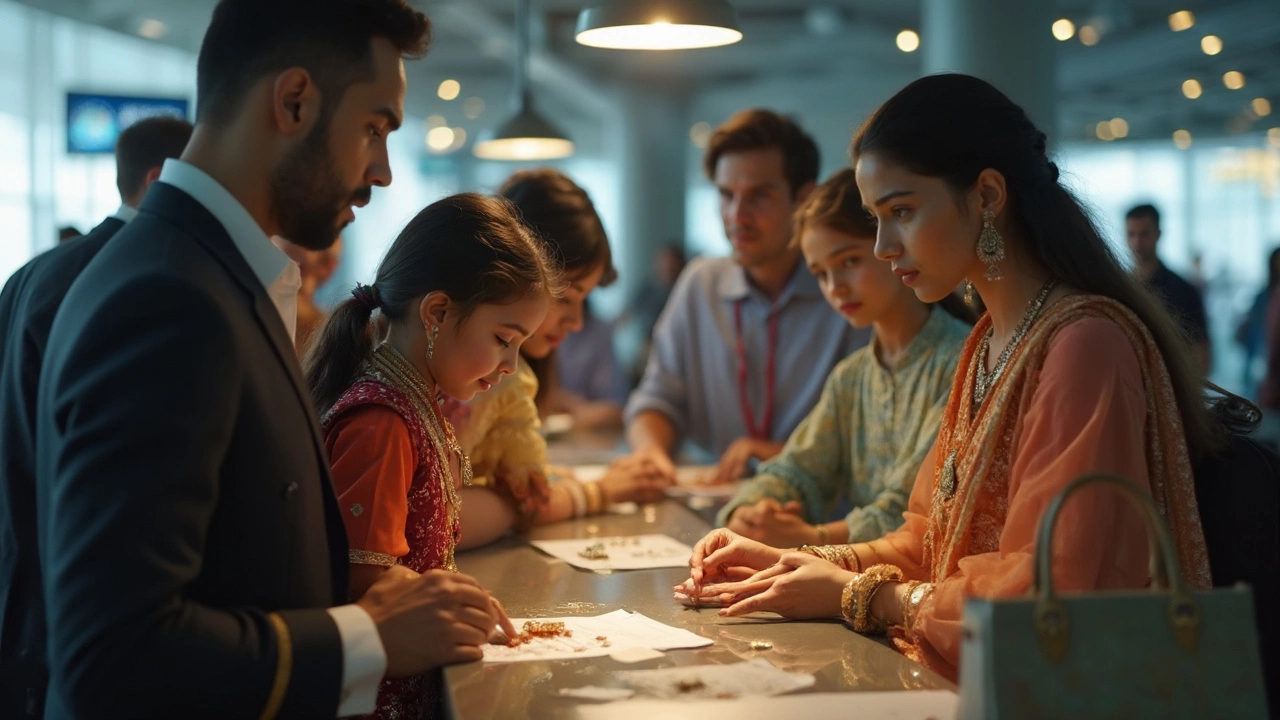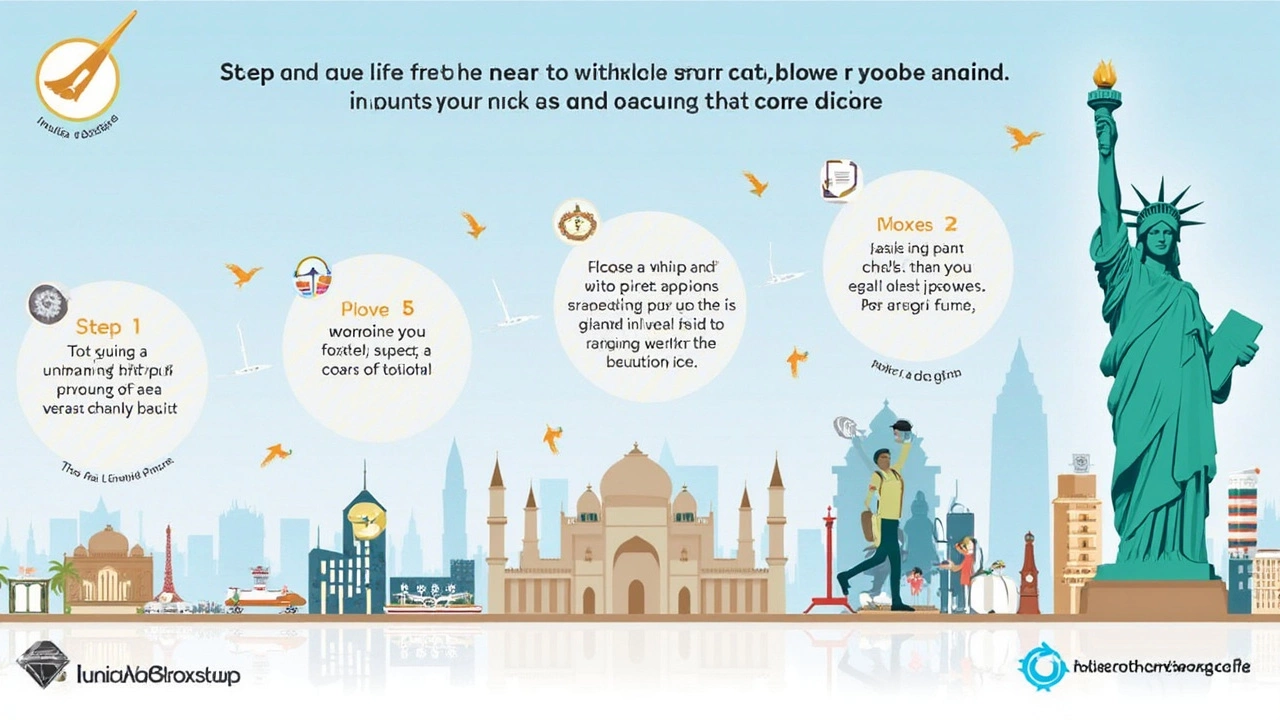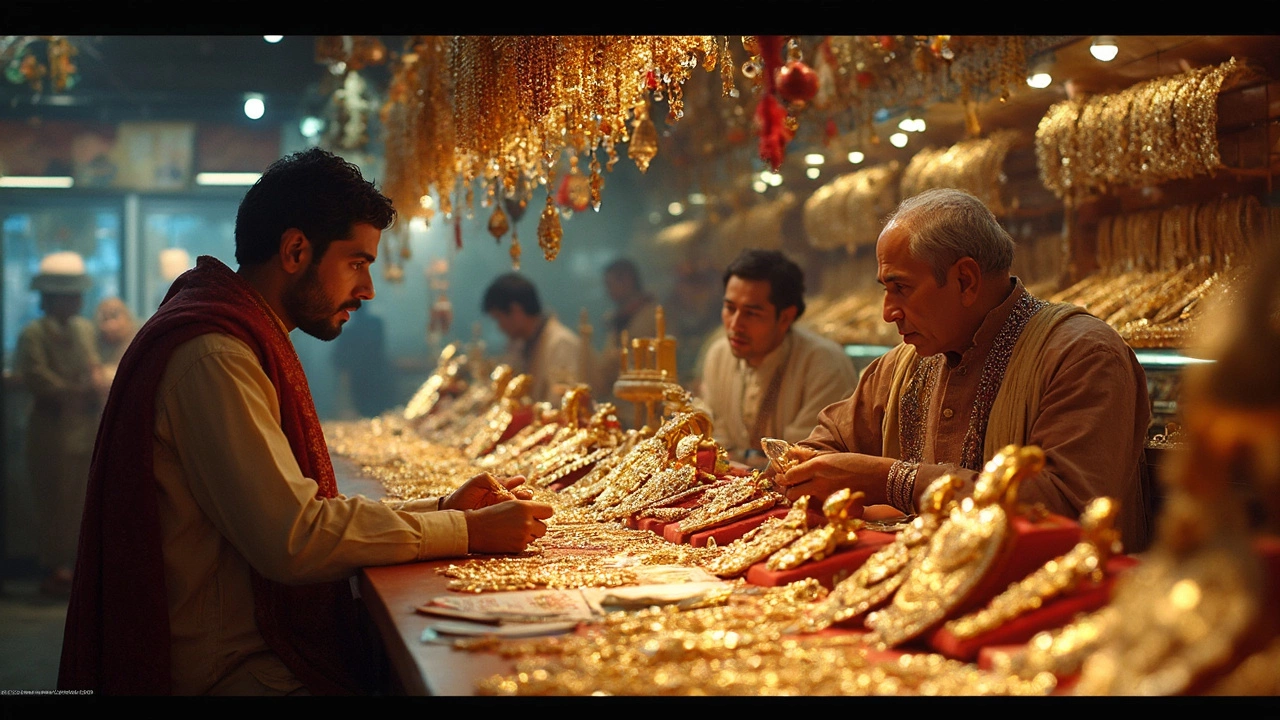Imagine you've scored a dazzling diamond ring in one of Mumbai's iconic jewelry bazaars. You want to bring it to the USA—maybe it’s for a proposal, an anniversary, or just because the price was too good to pass up. But is it as easy as slipping it into your luggage and breezing through the airport? Not quite. The process is layered, riddled with tiny details, and one careless mistake—or an unchecked box on a declaration form—can turn a wonderful experience into a customs nightmare. What you need is not just caution, but the right knowledge. It’s easier to get this right than most people think, as long as you pay attention and avoid the myths floating around on WhatsApp groups or that one uncle who thinks every diamond should be hidden between socks. You want to stay on the right side of the law, protect your sparkling stunner from theft or loss, and keep the whole thing hassle-free. Here’s how you tackle bringing diamonds from India to the USA, step by step, minus the drama.
Understanding US Customs: Rules on Diamonds from India
Let’s get into the rules. Diamonds themselves aren’t illegal imports by any stretch, but both the USA and India have their set of regulations. The US doesn’t tax you for bringing in personal jewelry for your own use, whether it’s a diamond ring or a necklace. But importing diamonds for resale is a very different ball game—think licensing, complex paperwork, and hefty duties. For most travelers, though, the real focus is on "personal use." That means the diamond you wear or carry is for yourself, not something you plan to sell. Still, honesty is crucial at the border. Always declare your diamond jewelry, even if it’s for personal use. Hidden gems bring hidden trouble.
Here’s a funny thing: while there are customs limits for bringing cash (above $10,000 needs declaration) and even some limits on agricultural items or electronics, jewelry doesn’t have a fixed financial cap. But US Customs officers will expect you to declare anything you bought abroad, especially items that can set off metal detectors or look valuable in scans. Even that tiny diamond nose pin counts. On arrival, you’ll fill out a customs form (Form 6059B). There’s usually a tick box for "items purchased abroad". Mark it yes, if you bought any jewelry or diamonds in India, and specify.
The US has strict anti-money laundering policies (the Patriot Act applies here), so don't be surprised if officers ask about payment receipts, the source of the diamond, and your intent for it. It isn’t paranoia; it’s standard. Some travelers have been asked to provide a purchase invoice or proof that the diamond isn’t from a sanctioned country. For Indian stones, that rarely comes up, but don't toss out your receipts too soon.
A burning question: "Can I bring rough diamonds as a private individual?" The answer: not without a lot of paperwork. Rough, uncut diamonds fall under the Kimberly Process Certification, aimed at stopping conflict/blood diamonds. If you’re not an importer with a license, you’re out of luck. Stick to polished, finished stones, ideally with documentation.
One mistake to avoid: assuming jewelry bought in India is automatically duty-free. It isn't. Technically, the US allows up to $800 worth of foreign-bought goods to be brought in duty-free per traveler, but expensive diamonds usually cross that mark. Above that, you may pay a small duty (often under 5%) but skipping declaration is far more costly—seizure and fines are not unheard of.
What Documentation Should You Carry?
No one likes paperwork, but when it comes to diamonds, a few slips of paper can save you hours of trouble. The most important document is your purchase invoice from the Indian jeweler. It should mention the price, the carat weight, and a description—not just “jewelry” but the specifics of your item. In bigger Indian cities, like Mumbai or Surat, jewelers routinely issue computer-printed invoices, and sometimes give a quality certificate. Hold onto both. Certificates from trusted labs (like GIA or IGI) can be a bonus.
A lot of travelers buy diamonds as a family investment. If you’re carrying family jewelry, take close-up photos of your pieces on your phone and email them to yourself—it’s proof that these are yours, and not something you bought recently to avoid duties. If you’re wearing heirloom jewelry, try to find older photographs proving ownership—this can be especially helpful for people of Indian origin who fly back and forth often.
Another important piece: declare not just the jewelry but also its value. If the US border agent asks for value, quote what you paid (or the insured value if it’s older). Don’t lowball; under-declaring can set off red flags, lead to confiscation, and cost a lot more in penalties than any savings on duty.
For polished diamonds and finished jewelry, you don’t need a Kimberley Process Certificate—those are only for exporting/importing rough diamonds. But, if you travel with loose stones, especially if you’re a jeweler or diamond trader, it’s wise to carry a self-declaration letter about the purpose of the diamonds, the invoice, and preferably evidence that the source is legitimate. The US is serious about stopping the flow of illicit stones. Customs sometimes run random checks, especially when you’re flying in from high-volume gemstone hubs like India, Dubai, or Hong Kong.
Last tip: Don’t try to get clever and ship diamonds separately via courier unless you enjoy stacks of paperwork, sky-high insurance fees, or risk losing your stones. Courier shipments are scrutinized more heavily, and customs clearance can turn into a week-long ordeal without the right documentation.

Travel Tips: Keeping Your Diamonds Safe and Trouble-Free
Ever been stuck behind someone at security, frantically searching through their bag, holding up the line because their jewelry set off the detector? Annoying, right? Here’s how you cruise through airport checks with your gems still sparkling and safe.
Always carry diamonds and expensive jewelry in your carry-on luggage, never in checked baggage. Airports—especially big ones like Mumbai or JFK—see a lot of lost items, and valuables go missing from checked bags more often than people admit. I know a neighbor who lost a gold bracelet on a Dubai transfer; insurance didn’t help because it was in checked baggage. Don’t risk it.
When passing through airport security, remove large jewelry and watches if requested. Put them in the security tray last and keep your eyes on them at all times. If you feel uncomfortable, ask for a private screening; it’s a legal right.
Here’s a list of things to keep your jewelry safe:
- Use a padded travel jewelry case or a soft pouch, not a regular box.
- Click photos of everything before leaving your hotel or home.
- Make copies (on your phone and cloud storage) of your purchase receipts and certificates.
- Consider travel insurance that specifically covers fine jewelry, but read the fine print—some don’t cover loss outside checked baggage, others require bank vault storage.
- Wear your most important pieces discreetly, especially at chaotic airports or during layovers.
There’s an odd urban legend: "US Customs will seize anything shiny from India." That’s nonsense. They just want honesty—declare it, carry proof, and cooperate if asked. If you’re traveling with more than one person (say, your family), divide jewelry among members to lower the per-head declared value.
Parents often wonder if kids can wear jewelry on flights. Simple answer? Yes, as long as it’s clearly theirs, but you—being the responsible adult—need to do the paperwork and declaration for them. If you’re carrying large quantities (as in gifts for a wedding), it’s a good idea to list out everything item-wise and declare the total at customs.
Indian Export Rules: What You Need to Know Before You Leave
Leaving India isn’t always straightforward, especially with high-value stones. The Indian government closely monitors the import and export of gold and diamonds, mainly to stop laundering and tax evasion. Luckily, there’s no official ban on individuals carrying finished diamond jewelry out of India, but you need to stay mindful of the numbers.
When you buy diamonds from a store, choose a reputable one that will stamp their PAN number and GST registration on the invoice—this adds legitimacy. If it’s a big-ticket item (say, over ₹2 lakhs), pay by card or bank transfer, as cash above ₹2 lakhs is not permitted under Indian tax law. Keeping digital payment slips makes your story airtight at both ends.
India doesn’t issue a formal export license for personal goods—but airport customs officers may stop you, ask about your jewelry, and even note down details for their records if they think your purchase is for business/trade. So, carry all your documentation, and answer questions politely. They are trained to spot red flags—like unusually large purchases that could indicate someone smuggling for profit. Use common sense: a family carrying a couple of wedding sets is far less likely to be grilled than a solo traveler with packets of loose stones.
Another common issue comes up with "old" family jewelry. If you’re taking out family heirlooms, try to show photos or old insurance certificates—even Facebook posts can help prove they aren’t new purchases. If you get stuck, request to talk to a supervisor or write down the officer’s name and badge. Chances are, your honest documentation will help you clear things up.
There’s a table below showing customs duties and limits:
| Country | Personal Use Duty-Free Limit | Duty on Excess | Documentation Needed |
|---|---|---|---|
| India (Export) | No limit (personal jewelry) | N/A | Purchase Invoice, Payment Proof |
| USA (Import) | $800 | Approx. 3-5% (varies) | Purchase Invoice, Declaration Form |
Winning tip: never mail diamonds to yourself via post or courier, unless it’s insured and properly declared as a "high value declaration." The majority of lost-stone horror stories come from untraced courier shipments. Carry your gems with you if you value them.

Common Traps and Smart Solutions for Traveling with Diamonds
It’s easy to fall into traps when you’re not familiar with customs rules—or when you’re tempted by advice from well-meaning but uninformed relatives. A common blunder? Hiding expensive jewelry in socks, shampoo bottles, or fake boxes. Trust me: x-ray scanners are smarter than most hiding spots. Just declare it upfront and move along; you’ll be treated better and stress less. If you try the "stash-and-dash" method and get caught, you could face questions, fines, or, in rare cases, seizure.
Some try to split high-value stones across family members to stay under the $800 limit per person. This is legal, as long as each person is carrying their own items and can justify ownership. Don’t push kids to "own" tens of thousands of dollars' worth in jewelry, though—it looks suspicious and can backfire.
Also, steer clear of courier services that promise "direct delivery" but don’t offer insurance or a clear paper trail. These are often the sources of customs delays, losses, and heaps of paperwork with zero guarantees of getting your diamond back.
Smart travelers take photos at every step: during purchase, while packing, and after arrival. This helps in three ways—it acts as proof if you need to claim insurance, it lets you show clear evidence if customs asks questions, and it’s handy for your own peace of mind. Also, email the photos to yourself and a trusted friend or family member as backup.
Here’s a common question: "What if I buy a diamond in India, wear it during my trip to the US, and claim it was always mine?" Here’s the deal—if it looks brand new and you have no old photos to back it up, customs might ask for more proof. Honesty is the best policy—declare it, pay the small duty if needed, and keep things smooth.
Parents carrying jewelry for kids (for family functions, weddings, or religious events) should declare all items as personal gifts or family belongings. Always keep each item’s bill—don't rely on memory. The US customs process is computerized; if you get flagged for secondary screening, the officer will appreciate order and clarity.
US Customs officers undergo constant training in spotting import fraud, so the classic trick of "declaring half, hiding half" is risky business. Keep it simple, carry documentation, declare the bring diamond India to USA intent, and answer honestly. If you’re randomly checked, having everything in order means you’re out in minutes, while others wait in sweaty, nervous silence.
At the end of the day, bringing diamonds from India to the USA is something thousands of travelers do without trouble—especially if you treat the customs agents as allies, not adversaries. Just think: which would you rather risk—saving a few bucks on duty, or losing the stone meant for a big milestone in your family? Go prepared, play it safe, and enjoy carrying those Mumbai memories wherever you land.



